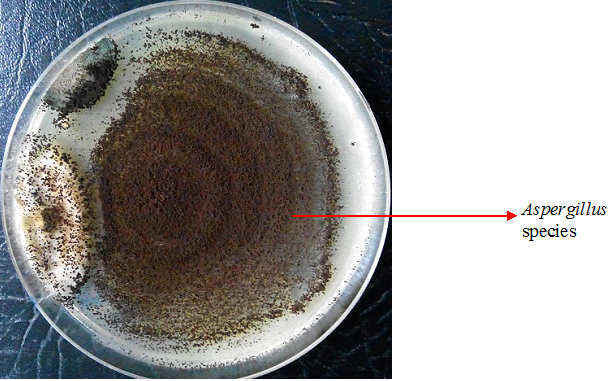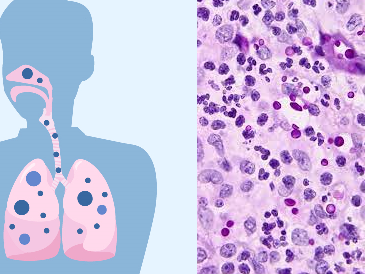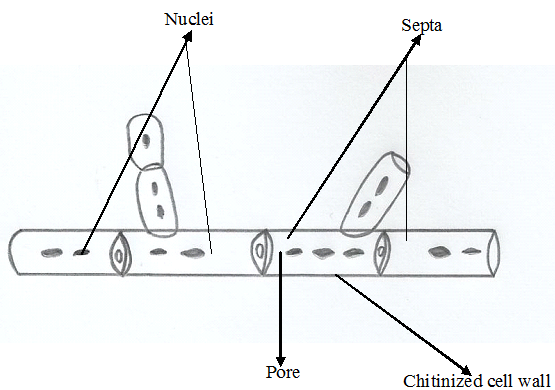Mycotoxins are exotoxins produced by fungi. The area of microbiology that studies fungi and the toxins they produce (i.e. mycotoxins) is known as mycotoxicology. The disease condition provoked by the intake of mycotoxins in human or animal hosts is generally known as mycotoxicoses.
Mycotoxins are pharmacologically active secondary metabolites produced by toxin-producing fungi in food, and which has the potential to stimulate lethal reactions in humans or animals that consume such toxin-infested food. When taken in large doses and allowed to accumulate in the body system, mycotoxins can elicit several acute and chronic intoxifications and other physiological reactions in human hosts.
Mycotoxins are mainly secreted by some specific fungal species especially moulds and some mushrooms such as Aspergillus species, Penicillium species, Fusarium species, Claviceps species and Acremonium coenophialum (Table 1). Apart from secreting potent harmful toxins, most Aspergillus species especially A. niger are common contaminants found in the microbiology; and they are notorious in colonizing culture media plates that are not properly stored (Figure 1). Mushrooms (e.g. Amanita species) produce a variety of mycotoxins; and the disease condition they cause is known as mycetismus.
The main route of entry of mycotoxins into the body is via the ingestion of mycotoxin-contaminated foods. Most fungal mycotoxins are produced in dried food products such as nuts, cereals, maize and other grains and food products. Other groups of food especially fruits (e.g. oranges, apple, mangoes) as well as vegetables are not left out as they could be contaminated by fungal toxins.
Mycotoxins are heat-stable or resistant to heating, and thus most food preparation techniques such as boiling may have little or no effect on their in vivo effectiveness. Thus, it is critical to avoid fungal infestation of food products instead of exposing them to conditions that encourage the growth of moulds in them, a factor that stimulate the production of mycotoxins. Utmost care is required in the processing and preparation of food meant for human consumption because of the ubiquity of fungal spores in the natural environment.
They are produced during the normal metabolic activities of fungi. High humidity and moist environment as well as high temperature are some of the factors that encourage the growth of moulds in food products. Fungi easily contaminate food products especially crop plants because fungi are ubiquitous in the soil.

Table 1. Synopsis of mycotoxins produced by fungi
| Organism | Mycotoxin produced | Effect |
| Aspergillus flavus | Aflatoxins | Mutagenic, teratogenic, immunosuppressive and carcinogenic activity |
| Penicillium species | Ochatoxin A and patulin | Carcinogenic and protein synthesis inhibitor. Patulin promotes apoptosis |
| Fusarium species | Fumonisins, deoxynivalenol, zearalenone | Promotes cellular damage and oxidative stress. Carcinogenic activity |
| Claviceps species | deoxynivalenol, zearalenone | Carcinogenic activity |
| Acremonium coenophialum | Ergopeptine alkaloids | Causes abortion, gangrene, convulsion, and suppression of lactation in animals such as sheep and cattle |
| Amanita phalloides | Amatoxins | Toxic lethal peptides that causes severe vomiting and diarrhea. Degenerative changes occur in the kidney and liver; and death may occur few days after intoxifications. |
| Amanita verna | Amatoxins | Same as above |
References
Anaissie E.J, McGinnis M.R, Pfaller M.A (2009). Clinical Mycology. 2nd ed. Philadelphia, PA: Churchill Livingstone Elsevier. London.
Beck R.W (2000). A chronology of microbiology in historical context. Washington, D.C.: ASM Press.
Black, J.G. (2008). Microbiology: Principles and Explorations (7th ed.). Hoboken, NJ: J. Wiley & Sons.
Brooks G.F., Butel J.S and Morse S.A (2004). Medical Microbiology, 23rd edition. McGraw Hill Publishers. USA.
Brown G.D and Netea M.G (2007). Immunology of Fungal Infections. Springer Publishers, Netherlands.
Calderone R.A and Cihlar R.L (eds). Fungal Pathogenesis: Principles and Clinical Applications. New York: Marcel Dekker; 2002.
Chakrabarti A and Slavin M.A (2011). Endemic fungal infection in the Asia-Pacific region. Med Mycol, 9:337-344.
Champoux J.J, Neidhardt F.C, Drew W.L and Plorde J.J (2004). Sherris Medical Microbiology: An Introduction to Infectious Diseases. 4th edition. McGraw Hill Companies Inc, USA.
Chemotherapy of microbial diseases. In: Chabner B.A, Brunton L.L, Knollman B.C, eds. Goodman and Gilman’s The Pharmacological Basis of Therapeutics. 12th ed. New York, McGraw-Hill; 2011.
Chung K.T, Stevens Jr., S.E and Ferris D.H (1995). A chronology of events and pioneers of microbiology. SIM News, 45(1):3–13.
Germain G. St. and Summerbell R (2010). Identifying Fungi. Second edition. Star Pub Co.
Ghannoum MA, Rice LB (1999). Antifungal agents: Mode of action, mechanisms of resistance, and correlation of these mechanisms with bacterial resistance. Clin Microbiol Rev, 12:501–517.
Gillespie S.H and Bamford K.B (2012). Medical Microbiology and Infection at a glance. 4th edition. Wiley-Blackwell Publishers, UK.
Larone D.H (2011). Medically Important Fungi: A Guide to Identification. Fifth edition. American Society of Microbiology Press, USA.
Levinson W (2010). Review of Medical Microbiology and Immunology. Twelfth edition. The McGraw-Hill Companies, USA.
Madigan M.T., Martinko J.M., Dunlap P.V and Clark D.P (2009). Brock Biology of Microorganisms, 12th edition. Pearson Benjamin Cummings Inc, USA.
Mahon C. R, Lehman D.C and Manuselis G (2011). Textbook of Diagnostic Microbiology. Fourth edition. Saunders Publishers, USA.
Discover more from Microbiology Class
Subscribe to get the latest posts sent to your email.




